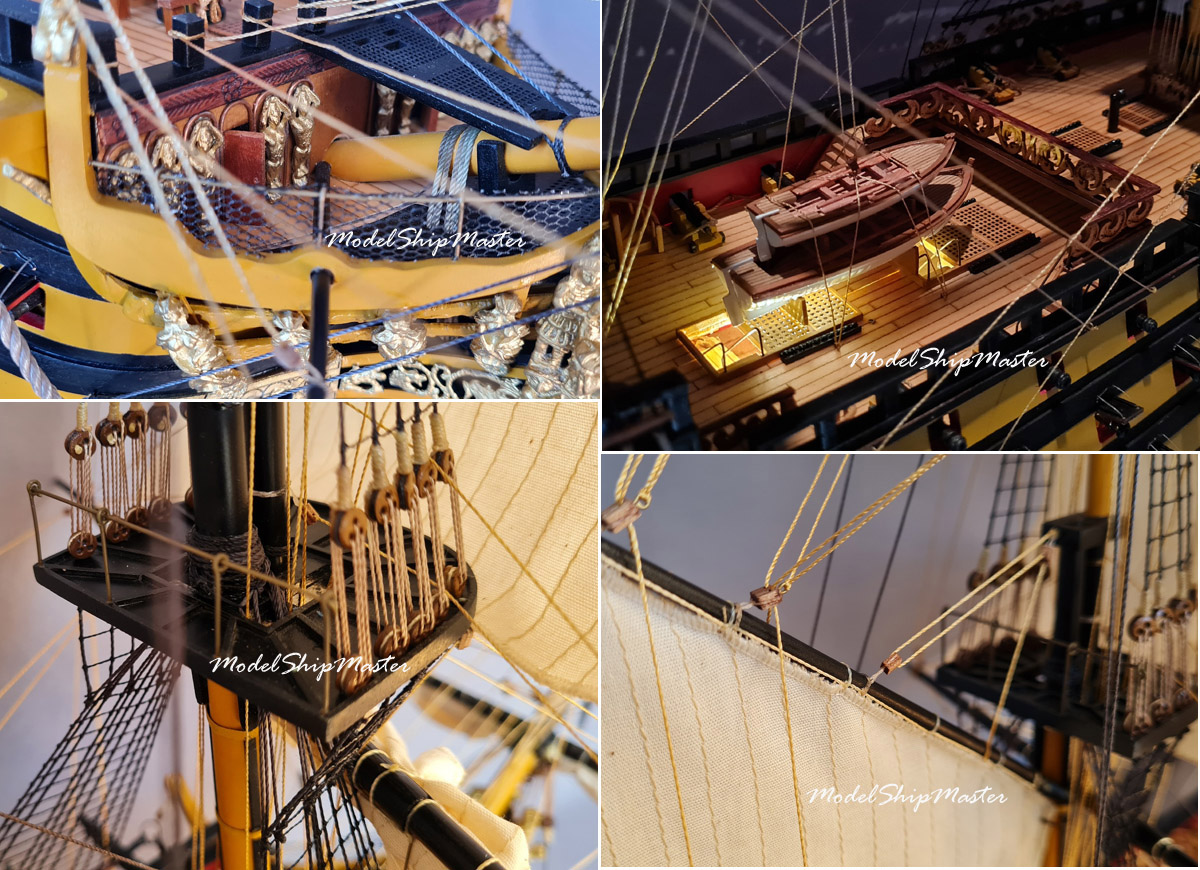|
History of HMS Royal Sovereign tall ship:
HMS Royal
Sovereign was a 100-gun first rate ship of the line.
She was best remembered as the flagship of Admiral
Collingwood at the Battle of Trafalgar. Royal
Sovereign led one column of warships while HMS Victory
led the other.
HMS Royal
Sovereign took the honor of the first ship of the fleet in action at Trafalgar on 21
October 1805. She was
a considerably faster ship and pulled well ahead of
the rest of the fleet.
Because
the winds were very light during the battle, all the
ships were moving very slowly, Royal Sovereign suffered
heavy fire from Fougueux, Indomptable, San Justo, and
San Leandro for almost an hour. Just
before his column engaged the allied forces, Collingwood
said to his officers: "Now, gentlemen, let us do
something today which the world may talk of hereafter."
.jpg)
As she cut
the enemy line and engaged the Santa Ana, Nelson pointed
to her and said, "See how that noble fellow Collingwood
carries his ship into action!" At the same time,
Collingwood said to his captain, "What would Nelson give
to be here?
Breaking
the line just astern of the Santa Ana, Royal Sovereign
fired a devastating double-shot raking broadside. She and Santa Ana dueled
for much of the battle, with Santa Ana taking fire from
fresh British ships passing through the line, while
nearby French and Spanish vessels fired on Royal
Sovereign. Santa Ana struck at 2:15pm, having
suffered casualties numbering 238 dead and wounded.
Royal Sovereign lost her mizzen and mainmasts, her
foremast was badly damaged and much of her rigging was
shot away.
At 3pm
Collingwood signaled for the frigate Euryalus to take
Royal Sovereign in tow. She was towed round to
have her port-side guns fired in support of the rest of
the British ships. Eventually she engaged with an
enemy's combined fleet which was coming about to support
the collapsing centre. Fire
from the hostile lead ships shot away the rope between the
Royal Sovereign and the Euryalus. While Euryalus made
off towards HMS Victory, Royal Sovereign bravely
solely exchanged
fire with the arriving ships, until Collingwood managed
to rally
several British ships around Royal
Sovereign to dissuade the enemy further attempt to
recover some of the prizes. HMS Royal Sovereign
get out of harm's way at 4:30pm.
.jpg)
At 4:40pm one of Victory's boats came alongside Royal
Sovereign and reported Nelson's death to Collingwood. This made him in command of the fleet. With a
storm rising, and disregarding Nelson's final order to
bring the fleet to anchor, Collingwood ordered all ships
to sail, and to take disabled and captured ships in tow.
Royal
Sovereign by now had most of her masts shot away that
she could not even make signals. So Collingwood transferred
himself and his flag to the frigate Euryalus, while Euryalus
took Royal Sovereign in tow for second time. HMS
Neptune took over the tow on October 22th then HMS Mars
a day after.
After 55 long years in faithful service, on August 28th,
1841, the HMS Royal Sovereign (now named Captain) was
finally broken up at Plymouth. Four of her guns were saved
for the Collingwood Memorial in Tynemouth.

|